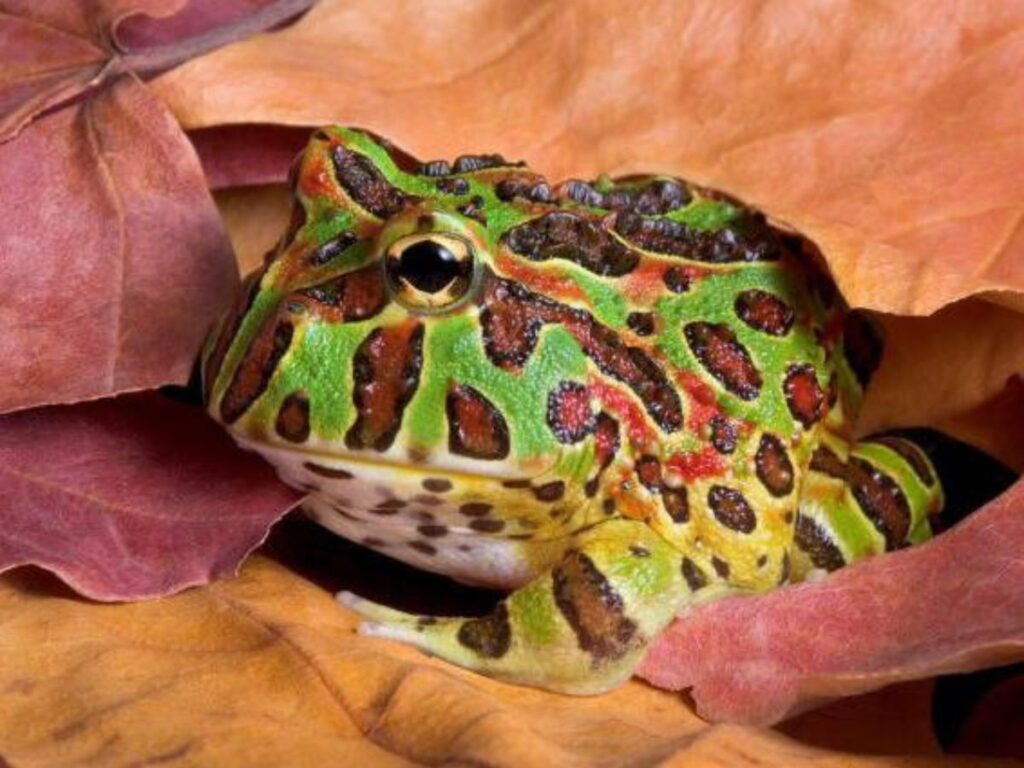🐸 How Do Pacman Frogs Hunt in the Wild?
Understanding the Ambush Predator Tactics of Nature’s Pac-Man
How Do Pacman Frogs Hunt in the Wild? - At a Glance
Pacman frogs are ambush predators that hunt by hiding in leaf litter and striking prey with lightning speed. Using camouflage, they wait patiently for insects, reptiles, and even small mammals to come close before snapping them up with a powerful lunge and sticky tongue.
Pacman frogs may look like lazy blobs buried in mud, but in the wild, they are surprisingly efficient predators. Their sit-and-wait hunting strategy relies on patience, stealth, and incredible jaw power to catch a variety of prey in South American rainforests and grasslands.
In this article, you’ll learn:
Where and how Pacman frogs hunt in their natural habitat
What wild Pacman frogs eat
How their anatomy helps them ambush prey
What makes their hunting style unique among amphibians
Differences between wild and captive feeding behavior

Natural Habitat of Pacman Frogs
Pacman frogs (Ceratophrys spp.) are native to South America, found in:
Rainforests
Grasslands and savannas
Subtropical and tropical lowlands
They thrive in environments with:
Loose, moist soil for burrowing
Dense leaf litter for cover
Abundant insect and small animal populations
👉 Pacman Frog Habitat in the Wild: Natural Environment Explored
👉 Where Do Pacman Frogs Live in the Wild?
Ambush Predation Strategy
Pacman frogs are not active hunters. Instead, they:
Bury themselves partially in the ground
Stay motionless with only eyes and mouth visible
Wait for prey to come within striking distance
Lunge and snap using their wide, sticky mouth
Their hunting success depends on stealth, camouflage, and quick reflexes.

Anatomy That Supports Their Hunting Style
| Feature | Hunting Advantage |
|---|---|
| Wide mouth | Can engulf prey nearly half their body size |
| Powerful jaws | Crush and hold prey firmly |
| Sticky tongue | Grabs insects with precision |
| Forward-facing eyes | Depth perception for targeting movement |
| Short, muscular limbs | Quick lunging power |
What Do Pacman Frogs Eat in the Wild?
Wild Pacman frogs are opportunistic feeders. Their diet includes:
Crickets, grasshoppers, and beetles
Earthworms
Small reptiles (like lizards and snakes)
Amphibians (including smaller frogs)
Rodents such as baby mice
Occasionally small birds
They are known to be cannibalistic and will eat other frogs, even of their own species, if food is scarce.
Hunting Behavior Insights
They rely heavily on movement detection—prey must move to trigger an attack
They don’t chew—prey is swallowed whole
They use burrowing and immobility to hide scent and reduce detection
They can survive long periods without food if needed

Day vs. Night Activity
While not strictly nocturnal, Pacman frogs are most active:
At dusk and dawn (crepuscular)
During wet seasons or after rainfall
When prey activity increases
Wild vs. Captive Hunting: What’s the Difference?
| Behavior | Wild Frogs | Captive Frogs |
|---|---|---|
| Prey variety | Insects, vertebrates, amphibians | Mostly insects, worms, feeder rodents |
| Hunting method | Natural ambush in leaf litter | Hand-fed or tong-fed in fixed setups |
| Exercise | Occasional lunging and burrowing | Minimal movement—can lead to laziness |
| Challenges | Unpredictable prey and environmental shifts | Controlled, consistent feeding schedule |
Final Thoughts
Pacman frogs may seem sedentary, but in the wild they are strategic, powerful ambush hunters. Their unique method of waiting, striking, and swallowing whole makes them one of nature’s most fascinating predators. Understanding their wild instincts helps improve both their care in captivity and our appreciation of their natural behaviors.
FAQ: Pacman Frog Hunting
Q: Do Pacman frogs use their tongue to catch prey like a chameleon?
A: Partially. They use their tongue for small prey, but larger prey is often lunged at and clamped with their jaws.
Q: Can they bite humans?
A: Yes—if they mistake your fingers for food! Their bites can be surprisingly strong, especially in larger adults.
Q: Do they hunt every day in the wild?
A: No. They eat when food is available and may go days or weeks without eating during dry spells.
